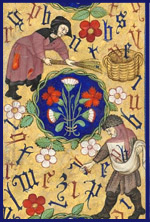Libraries at University of Nebraska-Lincoln

Copyright, Fair Use, Scholarly Communication, etc.
Document Type
Article
Date of this Version
8-17-2021
Citation
Houston: Digital Scholarship (August 17, 2021)
Also available at https://digital-scholarship.org/alsp/alsp.pdf and https://digital-scholarship.org/alsp/alsp.htm
Abstract
Introduction
The Academic Library as Scholarly Publisher Bibliography includes over 175 selected English-language articles, books, and technical reports that are useful in understanding the digital scholarly publishing activities of academic libraries since the late 1980's, especially their open access book and journal publishing activities. The bibliography covers the following subtopics: pioneering academic library publishing projects in the 1980's and 1990's, early digital journals and serials published by librarians (as distinct from libraries), library-based scholarly publishing since the Budapest Open Access Initiative, technical publishing infrastructure, and library and university press mergers/partnerships and other relevant works.
Here is the Library Publishing Coalition's definition of library publishing:
The LPC defines library publishing as the set of activities led by college and university libraries to support the creation, dissemination, and curation of scholarly, creative, and/or educational works.
Generally, library publishing requires a production process, presents original work not previously made available, and applies a level of certification to the content published, whether through peer review or extension of the institutional brand.
Based on core library values, and building on the traditional skills of librarians, it is distinguished from other publishing fields by a preference for Open Access dissemination as well as a willingness to embrace informal and experimental forms of scholarly communication and to challenge the status quo.
Starting in the late 1980's, university libraries were among the first publishers of digital scholarly journals on the Internet. With the approval and support of Robin N. Downes, the Director of the University of Houston Libraries, The Public-Access Computer Systems Review, an open access journal, was launched in August 1989, with the first issue being published in January 1990. In November 1990, the Virginia Tech University Libraries published the first issue of the Journal of the International Academy of Hospitality Research. The Stanford University Libraries established the HighWire Press in 1995, publishing The Journal of Biological Chemistry as its first journal. As of March 2015, HighWire Press had published over 2.4 million open access articles out of a total of 7.6 million articles. Again with Downes' approval, the University of Houston Libraries began publishing the Scholarly Electronic Publishing Bibliography, an open access book, in October 1996. This digital book was updated 64 times between 1996 and 2006 (Digital Scholarship continued its publication though version 80 in 2011).
In the 1990's, digital journal and serial publishing projects that involved university libraries working in partnership arrangements included the BioOne Project (the University of Kansas, the Big 12 Plus Libraries Consortium, and other partners), Project Euclid (Cornell University Library and Duke University Press), Project Muse (Johns Hopkins University Press and the Milton S. Eisenhower Library), and RLG DigiNews (the Research Libraries Group and the Cornell University Library Department of Preservation and Conservation).
Early digital journals and serials published by librarians included the Arachnet Electronic Journal on Virtual Culture, Ariadne, Current Cites, Information Research, Issues in Science and Technology Librarianship, The Katharine Sharp Review, LIBRES (early volumes), MC Journal: The Journal of Academic Media Librarianship, and Public-Access Computer Systems News. (See the Directory of Electronic Journals, Newsletters and Academic Discussion Lists, 6th edition and section 3.1 Electronic Serials: Case Studies and History of the Scholarly Electronic Publishing Bibliography for further information on this topic.
In the 1990's, University libraries also acted as important digital journal publishing testing grounds for major academic publishers in ventures such as the CORE Project, the Red Sage Project, the SuperJournal Project, and the TULIP Project. (See section 3.3 Electronic Serials: Electronic Distribution of Printed Journals of the Scholarly Electronic Publishing Bibliography for further information on this topic.)
In the 1990's, a few library organizations and companies published electronic journals and serials. The Library Information Technology Association published Telecommunications Electronic Reviews and OCLC published The Online Journal of Current Clinical Trials.
In the last 20 years, there has been a growing movement by academic and other libraries to directly publish books, journals, and other works. This resurgent activity has been fueled by the open access movement, which is typically viewed as starting with the 2002 Budapest Open Access Initiative. Academic libraries built organizational and technical infrastructure to support this movement, often using open source software that was created in order to advance it. An increasing commitment to the OA movement sparked important cultural changes in libraries, which resulted in the proliferation of institutional repositories, scholarly communication units, and research data support units supported by them.
Open source software from the Public Knowledge Project, such as Open Journal Systems, is frequently used in library-based publishing programs; however, a variety of software tools, are also employed. Promising new open source publishing programs, such as Fulcrum, Hypothesis, Janeway, Manifold, and PubPub, are emerging; but are not well represented in the types of works covered by this bibliography.
University presses are in a period of change and restructuring. Increasingly, they are being put under the administrative control of university libraries. Furthermore, entirely new all-digital open access university presses are being established, often under the direction of or in partnership with university libraries.
Included in
Intellectual Property Law Commons, Scholarly Communication Commons, Scholarly Publishing Commons


Comments
Copyright 2021, Charles W. Bailey, Jr. Open access material, CC-BY.
This work is licensed under a Creative Commons Attribution 4.0 International License.